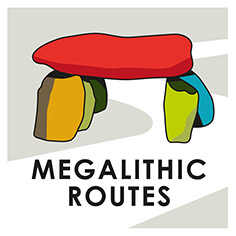The Cultural Routes of the Council of Europe
The Cultural Routes programme was launched by the Council of Europe in 1987. Its objective was to demonstrate, by means of a journey through space and time, how the heritage of the different countries and cultures of Europe contributes to a shared cultural heritage. The Cultural Routes put into practice the fundamental principles of the Council of Europe: human rights, cultural democracy, cultural diversity and identity, dialogue, mutual exchange and enrichment across boundaries and centuries.
The Cultural Routes act as an ‘open air’ laboratory of the European construction. They are the concrete realisation of Charters, Conventions and Recommendations on cultural heritage and sustainable tourism, enacted through an educational approach aimed at raising awareness of the importance of protection and sustainability. Beyond heritage, the routes also promote inter-culturalism and inter-religious dialogue through an open and diverse interpretation of Europe.
In December 2010, the Committee of Ministers of the Council of Europe adopted Resolution CM/Res(2010)53 establishing an Enlarged Partial Agreement (EPA) to enable closer co-operation between states particularly interested in the development of Cultural Routes.
Nowadays two Resolutions, CM/Res (2013)66 and CM/Res (2013)67, define what a Cultural Route of the Council of Europe is, describe the requirements leading to certification and the criteria which characterise the nature of the themes accepted, the various initiatives which should be implemented, and the characteristics of the European networks which manage the cultural routes once awarded the certification by the Council of Europe.
The European Institute of Cultural Routes was set up as part of a political agreement between the Grand Duchy of Luxembourg (Ministry for Culture, Higher Education and Research) and the Council of Europe.
Since 1998 its mission is to ensure the continuity and the implementation of the Cultural Routes programme in the 50 signatory countries of the European Cultural Convention, in close cooperation with the Council of Europe.
The EICR is located in the prestigious site of the European Cultural Centre of the Abbaye de Neumünster and houses the documentary resources of the programme as well as a library with books on Cultural Routes and related subjects of interest.
It provides advice to the cultural routes, both certified and projects, and welcomes project managers, researchers and students, this by cooperating with Universities in Europe and beyond.
It collaborates in the setting up and operation of the routes and participates in events and exhibitions, promoting a greater awareness of the links between culture, tourism and the environment. The EICR also carries out evaluations of existing routes and new proposals, using the considerable expertise it has accumulated on the methodology of creating, promoting and evaluating Cultural Routes.
After the creation of the Council of Europe Enlarged Partial Agreement on Cultural Routes, an agreement was signed between the Ministry for Foreign Affairs of Luxembourg and the Secretary General of the Council of Europe, establishing the seat of the EPA in Luxembourg, at the EICR.
Including the list of all official Cultural Routes please check the official website of the Cultural Routes of the Council of Europe.



